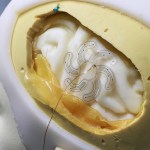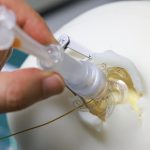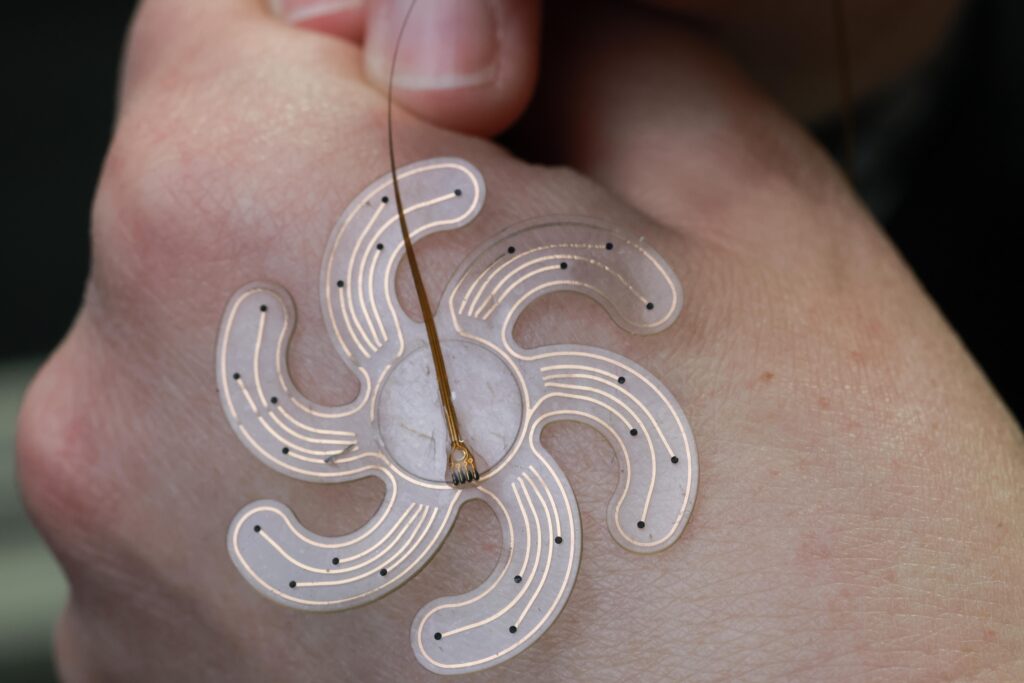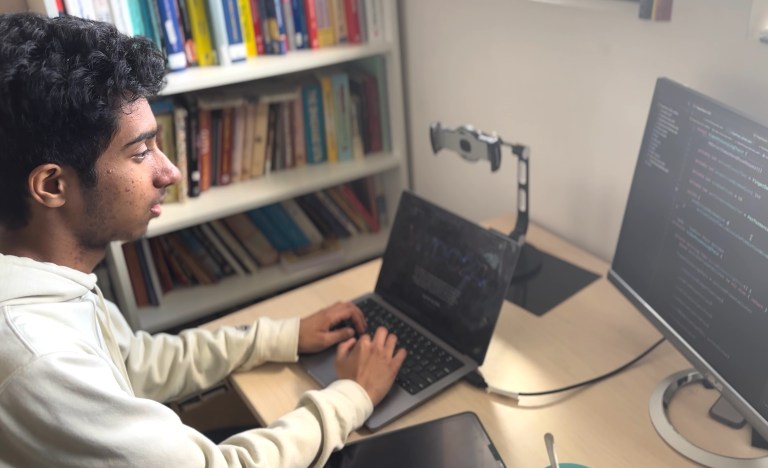Researchers at the Ecole Polytechnique Fédérale de Lausanne in Switzerland have developed a flexible, flowerlike device that can be inserted through a tiny hole in the skull and attached to the brain to help treat conditions like epilepsy.
The project was initiated after a neurosurgeon approached Stephanie Lacour, director of the EPFL Center for Neuroprosthetics, seeking a minimally invasive method to deploy a large cortical electrode array without damaging the brain. Cortical electrode arrays measure, map, or stimulate the brain and have been used in patients with neurological injuries or disorders.
Though variations of the technology have been around for decades, current devices come with a fair amount of limitations. In a study Lacour and her team published this month, they write that other arrays often “require trade-offs among cortical surface coverage, spatial electrode resolution, aesthetic, and risk consequences.”

“Minimally invasive neurotechnologies are essential approaches to offer efficient, patient-tailored therapies,” Lacour said in a news release from EPFL. “We needed to design a miniaturized electrode array capable of folding, passing through a small hole in the skull and then deploying in a flat surface resting over the cortex.”
They did so by combining soft bioelectronics and soft robotics, creating an extremely thin device with six spiral-shaped arms. The arms start off inverted inside a cylindrical tube and deploy once the array has reached its target, allowing it to cover a 4 cm surface area — double the 2 cm diameter of the hole it’s passed through. It rests within a space only about 1 mm in width between the skull and the brain.
The news release poetically describes the device as being “somewhat like a spiraled butterfly intricately squeezed inside its cocoon before metamorphosis.”
“The beauty of the eversion mechanism is that we can deploy an arbitrary size of electrode with a constant and minimal compression on the brain,” said Sukho Song, lead author of the study.
He added: “The soft robotics community has been very much interested in this eversion mechanism because it has been bio-inspired. This eversion mechanism can emulate the growth of tree roots, and there are no limitations in terms of how much tree roots can grow.”

As of now, the team has successfully tested their work on a mini-pig, but will continue developing prototypes through an offshoot of EPFL called the Laboratory for Soft Bioelectronic Interfaces.
“We think this is a technology that could be deployed widely at the clinic because of its minimally invasive nature,” Lacour explained in a video demonstrating the device. “So now what we hope to achieve is to scale the technology to fit it to humans and increase the number of electrodes so that we can have richer information from the brain.”
RELATED: Man Played His Saxophone While Undergoing Nine-Hour Brain Surgery











